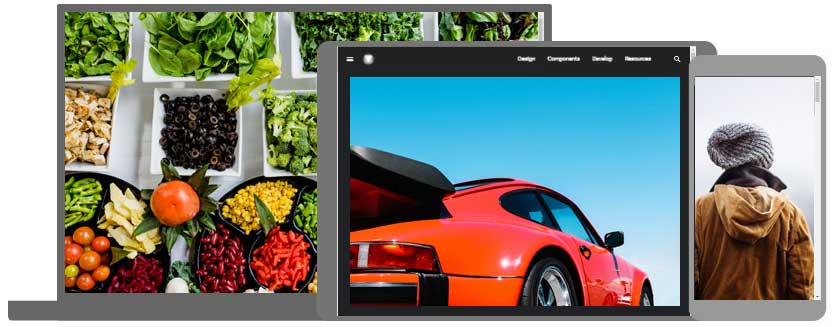HTML <picture> Element
The HTML <picture> element allows
you to display different pictures for
different devices or screen sizes.

The HTML <picture> Element
The HTML <picture> element gives web
developers more flexibility in
specifying image resources.
The <picture> element contains one or
more <source> elements, each referring
to different images through the srcset
attribute. This way the browser can choose the image that best
fits the current view and/or device.
Each <source> element has a
media attribute that defines when the image is the
most suitable.
Example
Show different images for different screen sizes:
<picture>
<source media="(min-width: 650px)" srcset="img_food.jpg">
<source media="(min-width: 465px)" srcset="img_car.jpg">
<img src="img_girl.jpg">
</picture>
Try it Yourself »
Note: Always specify an <img> element as the last child
element of the <picture> element. The <img> element is used by browsers that do
not support the <picture> element, or if none of the <source> tags match.
When to use the Picture Element
There are two main purposes for the <picture> element:
1. Bandwidth
If you have a small screen or device, it is not necessary to load a large
image file. The browser will use the first <source>
element with matching attribute values, and ignore any of the following
elements.
2. Format Support
Some browsers or devices may not support all image formats. By using the
<picture> element, you can add images of all
formats, and the browser will use the first format it recognizes, and ignore any
of the following elements.
Example
The browser will use the first image format it recognizes:
<picture>
<source srcset="img_avatar.png">
<source srcset="img_girl.jpg">
<img src="img_beatles.gif"
alt="Beatles" style="width:auto;">
</picture>
Try it Yourself »
Note: The browser will use the first <source> element with matching attribute
values, and ignore any following <source> elements.
HTML Image Tags
| Tag | Description |
|---|---|
| <img> | Defines an image |
| <map> | Defines an image map |
| <area> | Defines a clickable area inside an image map |
| <picture> | Defines a container for multiple image resources |
For a complete list of all available HTML tags, visit our HTML Tag Reference.

